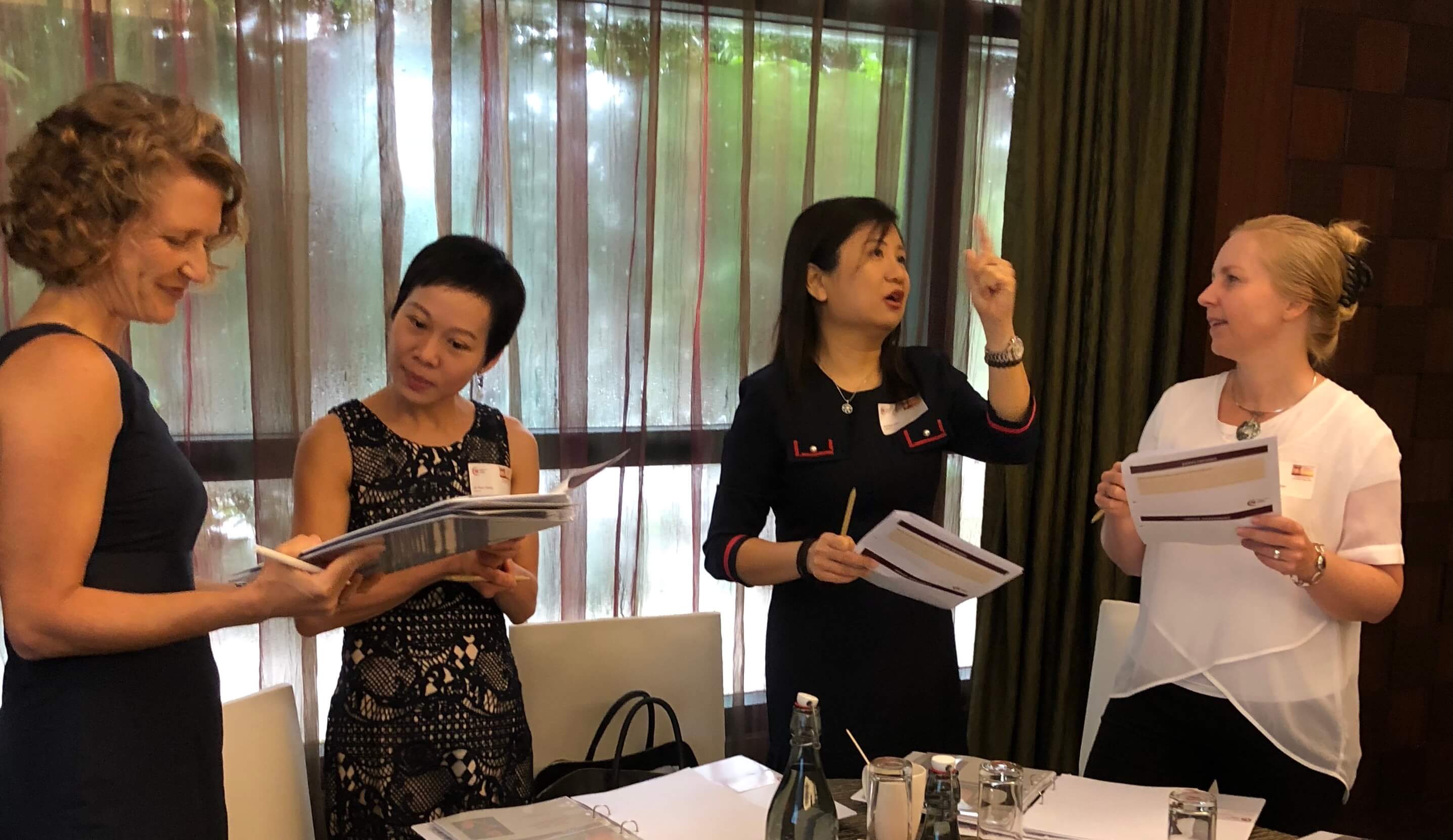As small yet significant strides are being made towards gender-balanced leadership in organisations, the question of the need for female only leadership programs is a fair one.
My team and I have now run 14 Women in Leadership Programs in Asia. While most of the 150 participants have supported the need for a female only program, there have been a few participants who challenged the idea whether women really need this ‘safe space’. I enjoy in-depth conversations about this whenever the opportunity presents itself. The main reason why participants believed there was no need for a female only program was that they felt welcomed and encouraged in their workplaces. This is truly encouraging to hear!
So why the need for separate Women Leadership programs?
Along the way somewhere women lost, or perhaps never had, the rights to be equal in terms of speaking up, taking up certain (or any) jobs, the rights to vote, and the list goes on. This has naturally led women to question ourselves. Can we really do this, are we worthy of a leadership position? I meet a lot of women who need extra reassurance to believe they have the right to have ambitions and strive for whatever they would like to achieve.
After all, what do we want? We want inclusive female and male leaders and organisations with inclusive cultures. On one hand, we should work on equality together by understanding how subconscious biases influence our decisions and how we can all be more inclusive leaders. On the other, we know from research that any minority representative needs additional members from that group in order to have a voice. As women represent the most typical minority group in leadership, Women Leadership programs help women gain and strengthen their voice.
THE STATISTICS
There is a long way to go despite the fact that things are moving in the right direction. According to the World Economic Forum’s Global Gender Gap Report 2020 it will take another 99.5 years until the overall global gender gap will close. The report examines four areas. Although the numbers vary across geographies, significant progress has been made on the Educational Attainment and the Health and Survival gaps where 96.1% and 95.7% of the gaps have been closed respectively. We are doing less well on Economic Participation and Opportunity where 57.8% of the gap has been closed, and we are doing even worse in terms of Political Empowerment where this number is only 24.7%.
The report also points out that it seems to be difficult to make bigger strides in addressing the gender pay gap. If we look at the global average of a woman’s income (in purchasing power parity), it is about $11,000 whereas it is $21,000 for a man.
HOW DID WE GET HERE?
It is difficult to explain how this all happened and why we ended up with inequality in leadership positions and pay. There could be simple biological reasons, e.g. men on average being stronger and strength was more needed in the earlier days of mankind. Women at times being limited physically while being pregnant and with small babies could be an additional reason. Maybe men have more of a ‘fight or flight’ reflex, while women ‘tend and befriend’, and this makes men more assertive in asking for what they want. However this inequality began and prevailed, our current world is slowly getting ready for the change.
The ‘MeToo’ movement was a fantastic, brave and very much needed outcry. However, I believe we need to be careful. We shouldn’t try to correct inequality without sufficiently including men, and it won’t help our case if we offend men by blaming and shaming all of them. Men need to be a part of the way forward. This is why we include male panellists and presenters even in our women only leadership programs.
For now, our female programs remain, but we have also started running Inclusive Leadership programs. Here, both women and men can learn and practice inclusive behaviour and skills together, embracing not only gender differences, but also cultural and generational differences and ultimately the diversity of thoughts.




